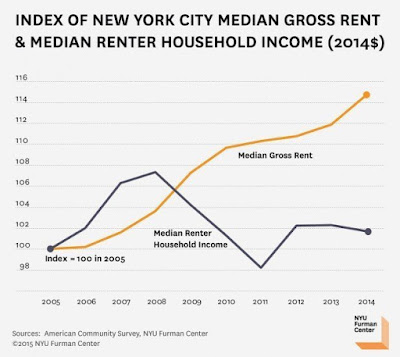On March 22, Mayor Bill de Blasio and the New York City Council voted to approve two critical pieces of the Mayor�s affordable housing plan. In addition to revising the city�s zoning code to allow for more residential development, Council approved a controversial Mandatory Inclusionary Housing (MIH) policy. Leading up to the vote and following the decision, news sources have been looking to various reports to assess housing needs in the Big Apple.
One Huffington Post article cited a real estate analysis conducted by Miller Samuel, Inc that found that the median rent for a two-bedroom unit in Manhattan was $4,746 (as of February 2016). Data for this report was from property buyers, sellers, ACRIS, Property Shark, Streeteasy/Zillow, real estate agents and lenders. Another article referred to an even more thorough report by New York University�s Furman Center, the State of New York City�s Housing & Neighborhoods in 2014, which found that over half of all New York City households are categorized as rent-burdened and that the median renter household income decreased between 2013 and 2014 while rent increased. This report utilized data drawn mostly from various American Community Survey estimates.
To address these issues, Council passed a multi-tier policy that targets increasing affordable housing a variety of income ranges while allowing developers some flexibility. One option requires developers to allocate 20% of units to households earning 40% of the area median income (AMI), which is currently $31,075 for households of three. Another option requires that 25% of units be set aside for those making less than 60% of the AMI. Of those units, 10% would be allocated for those making 40% of the AMI or less. Other options include higher percentages required for higher household incomes, including those making 115% of the AMI.
Whether or not this policy will increase or lessen New York City�s housing affordability issues is a conversation for another blog post.




No comments:
Post a Comment